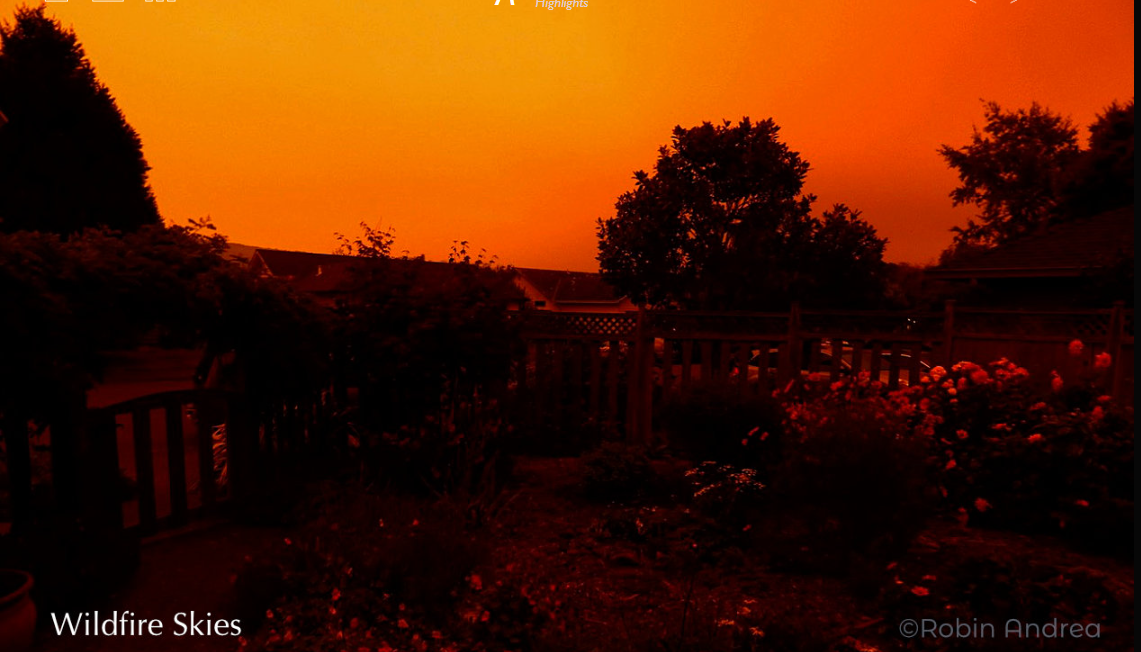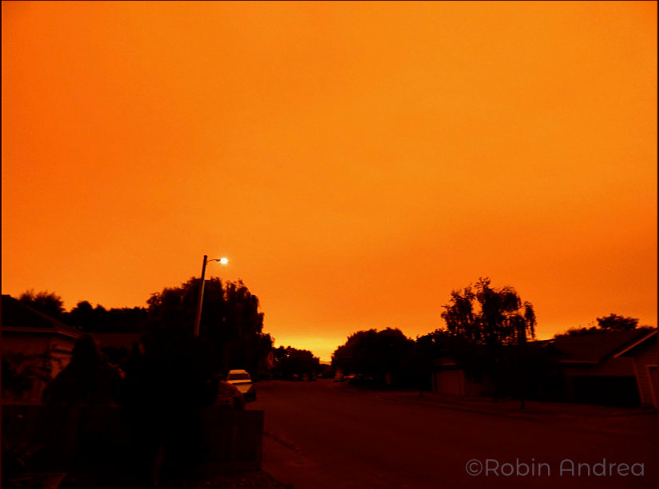Wildfire Sky Colours
Wildfire Sky Colors: A Phenomenon of Eerie Beauty
The sky is a canvas that often surprises us with its captivating colors, but none are quite as unsettling and mesmerizing as the hues that accompany wildfires. When wildfires rage, the sky transforms into a surreal display of red and orange, casting an eerie glow over the landscape. These wildfire sky colors have fascinated and puzzled people for centuries, and understanding the science behind them only adds to their mystique.
The Role of Smoke Particles
The key to understanding wildfire sky colors lies in the behavior of smoke particles. As smoke rises from the fires, it carries with it countless tiny particles. These particles interact with sunlight, causing the scattering and absorption of different wavelengths of light. Here's how it unfolds:
- Individual smoke particles scatter away more blue light than red. This phenomenon, known as Rayleigh scattering, is responsible for the blue color of the sky on clear days.
- The remaining ray of light that passes through the smoke becomes reddened as it traverses the dense smoke cloud.
- Within the dense smoke cloud, the reddened ray is multiple scattered in all directions, resulting in a uniform red appearance when viewed from below.
The Role of Particle Size and Smoke Density
The size of smoke particles and the density of the smoke play crucial roles in determining the specific colors observed in wildfire skies. Here's how these factors come into play:
- Smoke particles smaller than visible light wavelengths scatter blue light much more strongly than red light. This explains why the sky appears red during wildfires, as blue light is scattered away more efficiently.
- Larger smoke particles still scatter blue light more than red, but the wavelength dependence weakens as the particles increase in size. Particles several times larger than light wavelengths scatter all wavelengths more or less equally.
- Fresh smoke from a campfire, for example, exhibits an intermediate case where the smoke appears blue when viewed sideways to the sun and reddened when viewed downwind in the smoke.
- In the case of wildfire smoke, which consists of particles of various sizes, the scattered blue light is reduced, resulting in the reddening of sunlight without completely eliminating the presence of blue hues.
Multiple Scattering: The Uniformity of Wildfire Skies
When smoke clouds become dense, multiple scattering occurs. This means that light is scattered by many particles and travels in all directions. In the limit of an optically thick cloud, the light inside the cloud or sky takes on a uniform color. This color reflects the light's original hue before reaching the dense region.
- Everyday clouds appear white inside, while a clear blue sky appears milky white towards the horizon.
- In the case of wildfire skies, multiple scattering contributes to the almost uniform orange-red color. The sunlight reaching the dense smoke has already been reddened by higher-level, less dense smoke, intensifying the orange-red hues.
A Captivating Natural Phenomenon
The wildfire sky colors are a captivating natural phenomenon that showcases the intricate interplay between light and smoke particles. They create an otherworldly atmosphere, enveloping everything in their eerie glow. These colors serve as a reminder of the destructive power of wildfires and the need for vigilance in preventing and managing them.
As we gaze at these mesmerizing skies, it is important to appreciate the scientific explanations behind their appearance. Understanding the behavior of smoke particles and the influence of particle size and smoke density allows us to unravel the mysteries of these captivating colors. The next time you witness a wildfire sky, take a moment to reflect on the delicate dance between light and smoke that creates this ethereal spectacle.

Robin Andrea took this. It shows her Northern Californian garden lit - if that is the word - by the eerie red-orange sky of last Wednesday (9th Sept 20). "It was a sight like nothing else
we had ever seen. It was dark all day, the kind of dark just after the sun has sunk below the horizon with a red that stretched all across the sky in every direction. It was like that all day. Eerie and disconcerting." The dimness is evidenced by the long camera exposure needed - 1/4s f/2.8 ISO100.
Individual smoke particles scatter away more blue than red.
The remaining ray is reddened.
The reddened ray reaches a dense smoke cloud and is multiple scattered.
All direction is lost and the sky from below looks a uniform red.
The soot's colour has very little influence.
The smoke from the wildfires catters light to produce these lurid skies, the soot colour has little to do with it. hat matters is the soot particle size and the smoke density - how many particles between the eye and the sun.
Particles smaller than visible light wavelengths scatter short wavelength blue light much more strongly than long wavelengths reds. Lord Rayleigh in the 19C derived the small particle limit that the scattering goes as the inverse fourth power of the wavelength. Blue is scattered 10-15X more than red. Air molecules scatter sunlight in this manner and generate our blue skies and colourful sunsets. Note that the light of even glorious red sunsets still has some transmitted blue - not all is scattered away!
Larger particles still scatter blue more than red but the strong wavelength dependence weakens from the Rayleigh limit of the fourth power. Particles several times larger than light
wavelengths scatter all wavelengths more or less equally.
Fresh smoke is an intermediate case. Look at a campfire sideways - from sideways on to the sun the smoke looks blue. If you are unfortunate enough to be downwind and in the
smoke the sun is reddened.
The wildfire smoke is in this regime. It scatters away more blue
and the sun's transmitted light is reddened but not completely denuded of blues.
But the Californian skies need more than this......
The above holds for single scattering where a sun ray is scattered by only one
particle before reaching the eye.
When smoke clouds are dense light is scattered by many particles and travels in all
directions. In the limit of an optically thick cloud the light inside the cloud (or sky)
becomes a uniform colour. The colour is that of the light before reaching the very
dense region. Everyday clouds are white inside, a clear blue sky gets milky white"
towards the horizon.
Multiple scattering coloured the Californian skies an almost uniform orange red. Orange red because the sunlight reaching the dense smoke had already been reddened by higher level less dense smoke.

Streetlights turned on in daytime
Note: this article has been automatically converted from the old site and may not appear as intended. You can find the original article here.
Reference Atmospheric Optics
If you use any of the definitions, information, or data presented on Atmospheric Optics, please copy the link or reference below to properly credit us as the reference source. Thank you!
-
<a href="https://atoptics.co.uk/blog/wildfire-sky-colours/">Wildfire Sky Colours</a>
-
"Wildfire Sky Colours". Atmospheric Optics. Accessed on November 26, 2024. https://atoptics.co.uk/blog/wildfire-sky-colours/.
-
"Wildfire Sky Colours". Atmospheric Optics, https://atoptics.co.uk/blog/wildfire-sky-colours/. Accessed 26 November, 2024
-
Wildfire Sky Colours. Atmospheric Optics. Retrieved from https://atoptics.co.uk/blog/wildfire-sky-colours/.